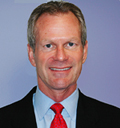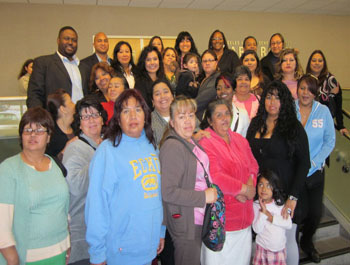From the Latino Coalition
Los Angeles –June 14, 2011 –The initial Assembly, Senate and Congressional district maps released by California’s Citizens Redistricting Commission would weaken opportunities for the poor and underserved in the democratic process. We the people of Californian approved the creation of this Commission hoping for a transparent redistricting process that would produce fair lines for all people of this great State of California.
The Commission must respect the geographic integrity of our neighborhoods. Commissioners must also respect the federal Voting Rights Act and draw a certain number of majority-Black, majority-Asian or majority-Latino districts, where they can elect representatives of their choice. It is imperative that these maps act in accordance with the federal Voting Rights Act of 1965 (VRA), which protects underrepresented communities from discrimination in the electoral process.
Under state law, the VRA is one of the highest priorities that the Commission must apply in drawing the new districts and the Commission’s initial plan falls far short of that standard.
Also this plan fails to consider communities of interest—that is, self-identified groups of people with something in common economically or socially—but communities of interest also tend to be communities of similar politics.
These maps represent a bittersweet state of affairs for the underserved and underrepresented communities in California, especially in Los Angeles County. Since the last time maps were drawn, California’s Latino population attributed for 90% of the state’s total growth, and California would have lost Congressional seats without it. With these maps the Commission has failed to reflect the Latino population growth by not producing opportunities for increased Latino representation.
The Commission’s map also places some of Los Angeles’ poorest neighborhoods of Pico-Union/Westlake in the same district as the affluent western communities of Beverly Hills, Pacific Palisades, and downtown’s financial district. These maps would further disenfranchise Blacks, Asians, and Latinos by not giving them a fair and equal voice in the democratic process.
This plan falls short in creating communities of interest districts, and could reduce the current number. One of the Congressional districts in the Commission’s map places Latinos and African Americans against each other, two underrepresented groups that have worked for decades to earn adequate political representation for their respective communities.
Latinos represent California’s second largest population group, and the state’s democracy will only remain strong if it is responsive to the Latino community. As the Commission moves forward in revising its initial maps, it must make sure that the lines drawn provide Latinos with opportunities for fair and just representation – the future of our State relies on it.
Note: A new conference will be held Wednesday, June 15, 2011 at 11 am in front of the LAPD Olympic Police State (1130 S. Vermont, Los Angeles 90006) to urge community members to testify at this week’s commission hearings. COMMISSION HEARINGS.


















